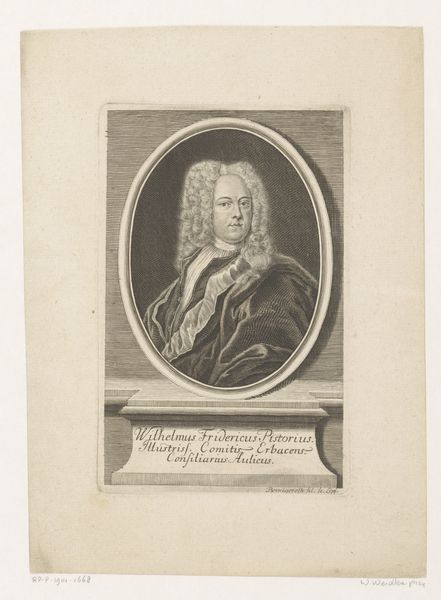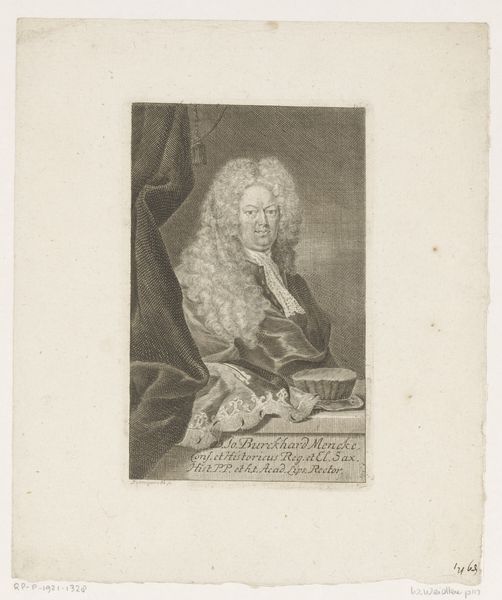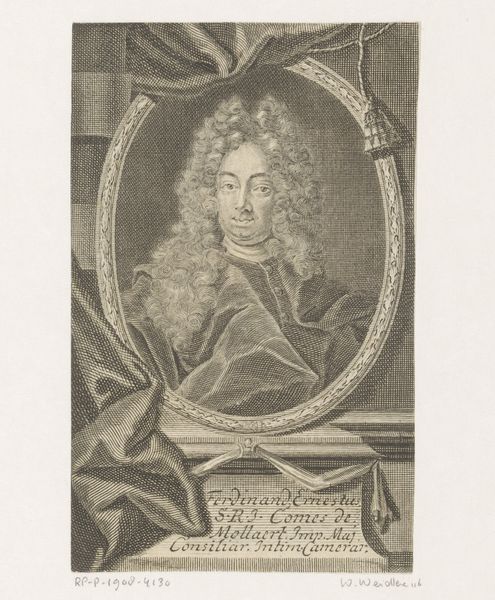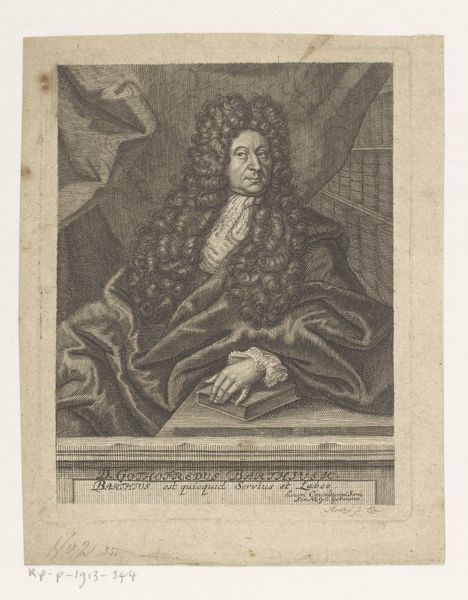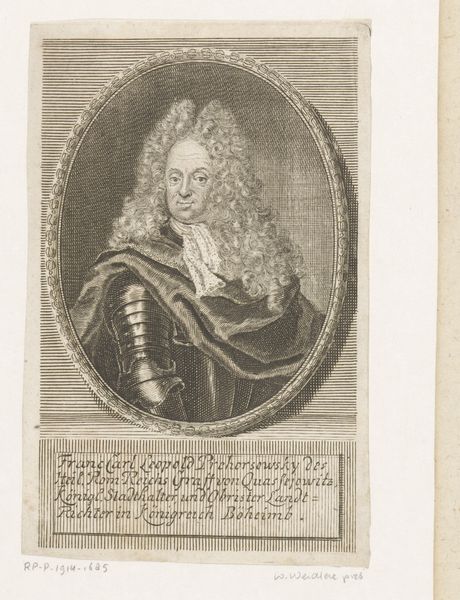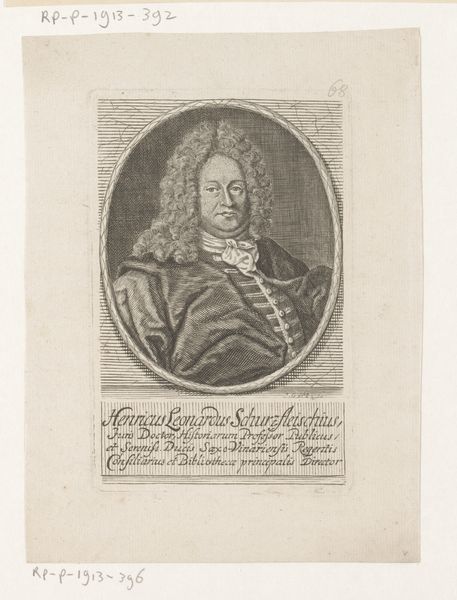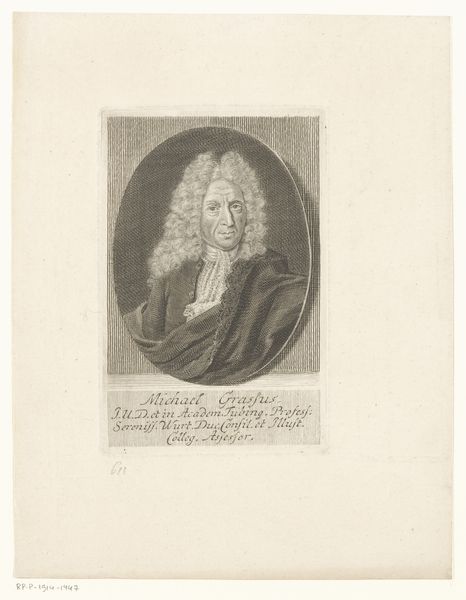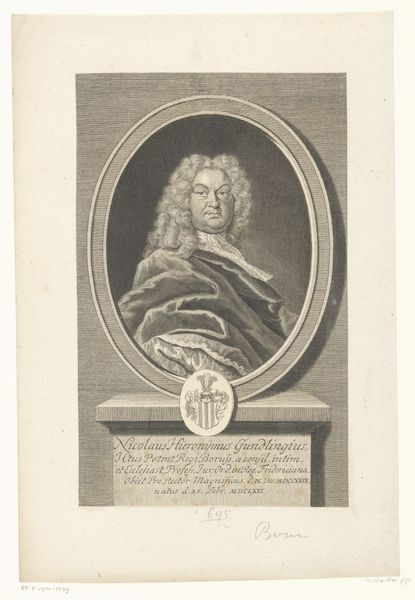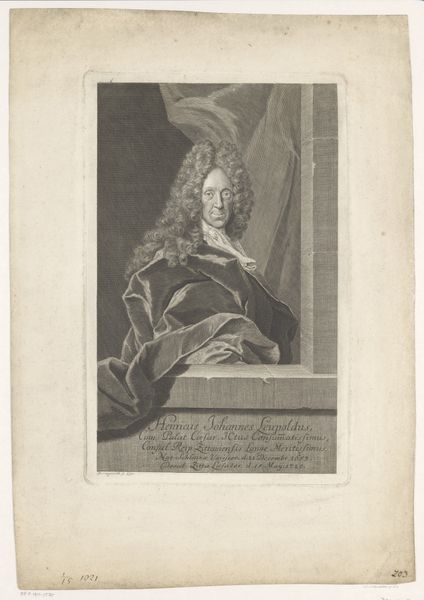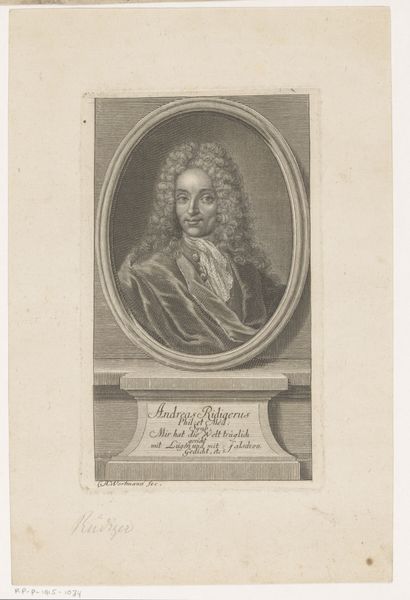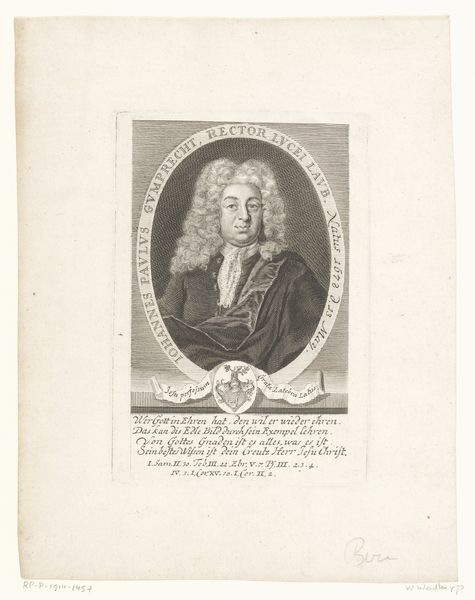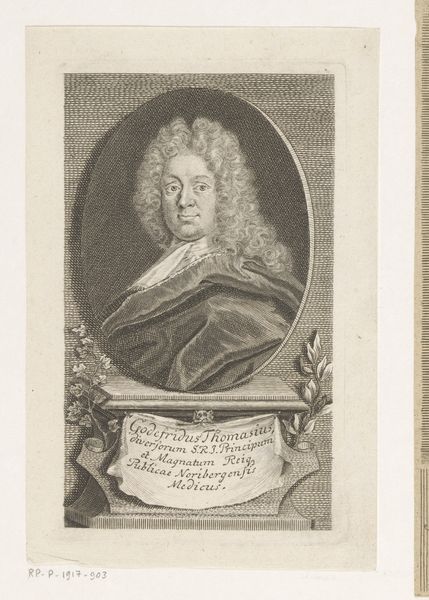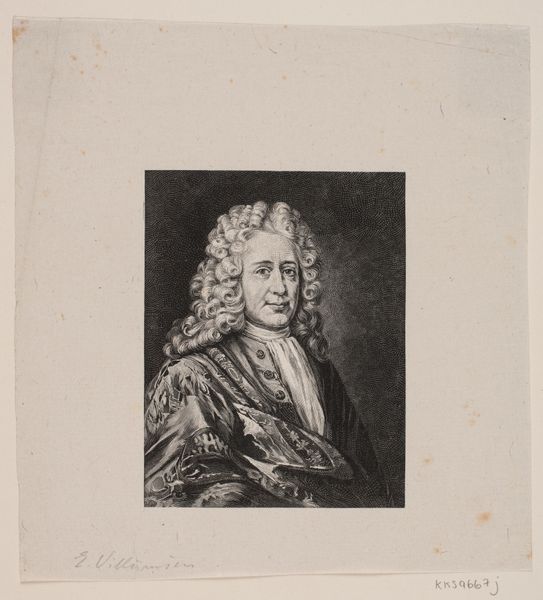
print, engraving
#
portrait
#
baroque
# print
#
history-painting
#
engraving
Dimensions: height 151 mm, width 98 mm
Copyright: Rijks Museum: Open Domain
Curator: Here we have a Baroque engraving, a print made in 1728 by Martin Bernigeroth. It's titled "Portret van Johann Zacharias Platner" and is currently held at the Rijksmuseum. Editor: The man practically overflows with privilege. Look at the luxuriant wig! And the way the light catches the folds of his heavy robe... It’s almost tactile, this sense of plushness. Curator: Well, the texture comes from the technique. Think about the process—the careful scoring of the metal plate, the application of ink, the immense pressure required to transfer the image onto paper. Engraving was skilled labor, highly valued at the time. Editor: Absolutely, and beyond the artist's skill, consider the societal function of portraiture like this in the 18th century. It served as propaganda almost, cementing the subject's status and propagating a certain image of power. Who was Platner? And how was Bernigeroth connected to him? Curator: Platner was a professor of medicine, a doctor. Engravings like this allowed his likeness to circulate beyond his immediate sphere. Bernigeroth made quite a living creating these images, feeding the demand for public figures to immortalize their image. Editor: And in terms of material impact, consider the paper itself. Where did it come from? What were the conditions of labor for those producing it? Paper in this era wasn't the throwaway commodity we consider it today. It was a valued product that denoted learning and power. Curator: Right, and prints such as these had political value because images could be reproduced. Disseminating engraved portraits allowed for wider distribution than unique, individual portraits ever would. Think about the message Platner wanted to transmit through the proliferation of his likeness. Editor: He definitely wanted to signal that he had influence. As you said, the act of immortalizing himself via print must be considered within the framework of a society striving for public recognition and demonstrating social control. The politics of imagery were clearly at play here. Curator: Indeed. It's a confluence of materiality, process, social standing and visibility, all etched onto this single sheet. Editor: An intriguing little snapshot of power dynamics made visible through skilled labor and mass reproduction.
Comments
No comments
Be the first to comment and join the conversation on the ultimate creative platform.
